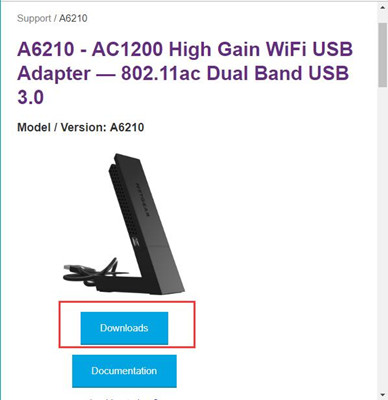


That also means that the A6210 really does utilize the bandwidth provided by the USB 3.0 standard, and maximum throughput will not be achieved when plugged into a USB 2.0 port. We acheived 234Mbps, or nearly 30MB/s, meaning it’s faster to transfer files over your intranet using the A6210 than to plug in a USB 2.0-based device and copy it over the old-fashioned way. Paired with our Linksys EA 6900 router, we measured the time it took the A6210 to transfer 1GB of JPEG files between two PCs on our network. Of course, all is forgiven when you plug the A6210 into its form-fitting cradle, fire up a desktop PC, and realize that it can hit sustained transfer rates of over 25MB/s, or faster than is possible on most USB 2.0 thumb drives. Unless your laptop is sitting firmly on a desk and not moving anywhere, you simply won’t want to use this adapter for laptop networking. Furthermore, it’s so large and heavy that installing it in a laptop is begging for it to be knocked out or to fall out on its own accord. While it can be inserted directly into a USB port, on many systems, it actually won’t fit due to its width, at least if you have anything in adjacent ports. It includes a custom-designed base to allow for desktop use, and the effort that went into creating this slick piece of equipment suggests the reality that Netgear likely had in mind this is really a USB adapter intended for desktop PCs. Perhaps living up to its somewhat lengthy name, the A6210 is quite a large device, measuring 3.25″ x 1.25″ x 5/8″, and nearly 6″ fully extended, not including the USB jack. The Netgear A6210 AC1200 WiFi USB 3.0 Adapter is a two-stream 802.11ac device, offering a rated 867Mbps on the 5GHz band and 300MBps on the 2.4GHz band (hence the AC1200 in the official model name). How could moving up to the more taxing 802.11ac standard help the situation? Well, several years have passed since 802.11ac hit the stage, and while a number of half-hearted attempts at an 802.11ac adapter have been introduced over that time, Netgear has finally delivered a robust USB adapter worthy of running an 802.11ac network. Quite a few have simply under-performed from the start, while others had poor driver support and did not work properly under Windows 8.1. You see, we had a lot of experience with 802.11n USB adapters, and most left us unimpressed. We’ve been running an 802.11ac network for a while, but the only client we’ve trusted to provide true 802.11ac speed thus far has been a wireless bridge.


 0 kommentar(er)
0 kommentar(er)
